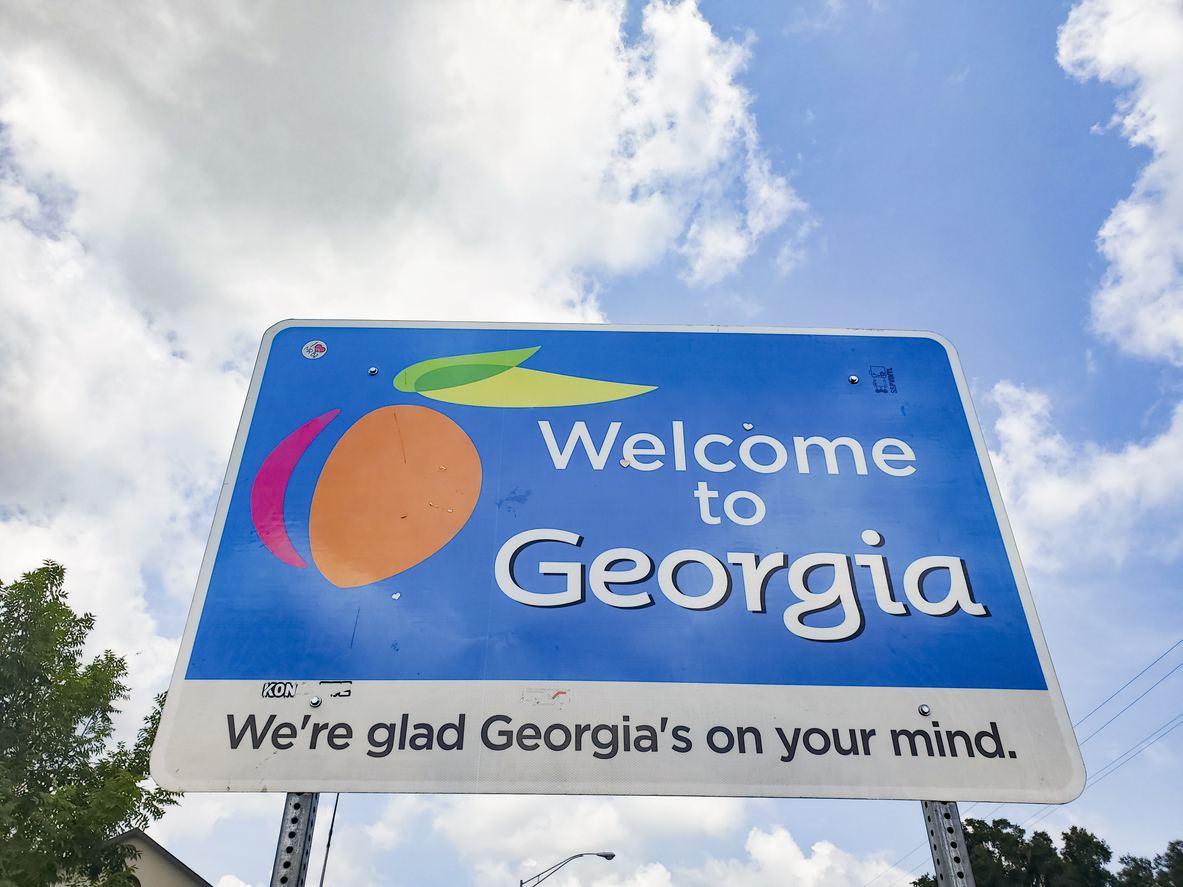Strategies for Teaching Phonics to Older Students
After the COVID-19 pandemic and the widespread learning loss that consequently occurred, many high school students struggle with decoding challenges, general fluency abilities, reading comprehension, and even language acquisition.
Data from McKinsey & Company provides critical, albeit bleak, insight into the academic achievement of students in the U.S. from 2019 to 2021. The average student in K-12 schools in the U.S. is five months behind in math and four months behind in reading. This disparity can be even wider for students of color, with students at majority-Black schools having fallen up to five months behind in reading compared to students at majority-White schools. Students in low-income urban districts also fell further behind compared to high-income rural and suburban school students.
With such stark data to support that reading instruction is critical for older students, is it time to consider the strategies long reserved for early childhood in the secondary classroom?
If we are to improve students’ general reading abilities, and more importantly, if we hope to close the many academic gaps that were widened during the global pandemic, the science of reading is a strong place to start.
THE SCIENCE OF READING
The science of reading encompasses a multi-strand understanding of the cognitive processes involved in proficient reading; namely, it is collective research from years of study that confirms and refutes some of the most common theories on how students best learn to read.
The science of reading can be broken down into five key ideas:
- Phonemic Awareness: The ability to identify individual sounds in spoken words
- Phonics: Instruction on understanding how letters and groups of letters link to sounds to form relationships and spelling patterns
- Fluency: The ability to read words, phrases, and sentences correctly, with appropriate speed and expression
- Vocabulary: Knowing what words mean and how to say and use them
- Comprehension: The ability to understand what you’re reading
Though strategies related to phonemic awareness and phonics might seem misplaced in a classroom of older students, many of these approaches can help fill the gaps for middle and high school students. Additionally, current national literacy data points to significant challenges in terms of fluency, vocabulary, and comprehension, so taking extra care to focus on these key ideas can be precisely what students need to achieve grade-level reading performance.
Importantly, integrating the science of reading can be especially helpful for students in special populations like those receiving Special Education services or English Language Learners, as they provide considerable reading scaffolds without isolating students from the general learning environment.
Strategies for Teaching phonics to older students
1. Word Families, Word Patterns, and Wordplay
Teaching older students about word families and patterns can provide them with a scaffold for decoding unfamiliar words. The National Reading Panel claims that “teaching children to read involves providing explicit and systematic instruction on the alphabetic principle, phonemic awareness, decoding, and word recognition skills.”
Word sorting activities, wherein students categorize words based on shared phonetic features, can facilitate stronger recognition of those words. For instance, students might be given word lists and asked to sort the words by word family: words with “ain” like brain, chain, and complain sorted together and words with “ake” like wake, quake, and rake sorted together.
How to Bring Wordplay into the Classroom
In a high school classroom, wordplay can include a five-minute warm-up during which students must transform one word into another through a chain of phoneme manipulation. Students can be instructed to change or remove one phoneme at a time, and every step must include a real word. For instance, one wordplay activity can ask students to get from “sat” to “top” while only changing phonemes, e.g. sat → sit → sip → tip → top.
Though this activity might seem simple, it helps students better understand sounds and how changing or manipulating sounds changes the resulting words. This is especially helpful for English Language Learners, who might still be confused by similar words.
2. Modeling Fluency
Students can’t be expected to be fluent readers without access to ample examples of fluency. Though read-alouds are often reserved for elementary-aged students, consider selecting chunks of grade-level text to read out loud to students to model pronunciation, inflection, prosody, and accuracy.
Choose specific pause points in the text, particularly those that might be challenging grammatically, syntactically, or because of word combinations, to highlight them for students. When approaching those challenging sentences, consider modeling, then guiding students through a whole-group choral reading of those sentences. This low-risk approach helps struggling readers feel more comfortable practicing their oral reading skills while offering them a scaffold to help them achieve success.
When students approach a reading task in pairs or small groups, direct students through paired read-alouds where they can practice their fluency skills in a smaller setting with assistance from their peers.
3. Vocabulary Development
Expanding vocabulary alongside phonics instruction enhances high school students’ reading comprehension. In many cases, fear of unknown vocabulary can inhibit students’ willingness to take on a complex text. Bear et al. (2011) highlight the importance of morphology, stating, “Teaching students about prefixes, suffixes, and root words aids in decoding complex terms encountered in academic texts.”
Vocabulary activities focusing on morphology alongside phonics instruction can empower students to decipher unfamiliar words, fostering deeper comprehension and overall language proficiency.
One way to support students’ understanding of the morphology of vocabulary words is to embed vocabulary teaching during the preview of a new text. A teacher can take a keyword from the text with a prefix or suffix and model the ways that the prefix or suffix changes the base word’s meaning. Students can then brainstorm other words using the same prefix or suffix and test whether the same meaning applies.
Word maps that include connections between words through their morphemes are a great way to help older students draw associations to complex vocabulary—vocabulary they’ll need to know not only for foundational reading but even for rigorous assessments like the SAT and ACT.
Morphemes are not the only way to provide older students with vocabulary support. Fun in-class activities, like using key vocabulary from a text and writing haikus that use those terms correctly, can be a fun way to integrate vocabulary instruction while keeping students engaged. Students can also work in groups to write an excerpt of dialogue that includes the necessary vocabulary.
To support English Language Learners with these vocabulary activities, consider pre-printing vocabulary cards that include bilingual definitions and easily recognizable visual aids or even real-world models. For tech-savvy educators, consider including QR codes on vocabulary cards that lead students to audio pronunciations of those difficult terms.
4. Knowledge Building
Teaching students to recognize words, sounds, phonemes, and morphemes is critical to building their reading fluency. However, comprehension will continue to be challenging if students are not given time and opportunity to build the implicit knowledge base to apply to grade-level text. Considering that students’ backgrounds can result in a vastly dissimilar “knowledge bank,” teachers should spend ample time building in students the knowledge needed to understand a new text.
Knowledge Building Classroom Activities
One strategy for building background knowledge in older students is implementing knowledge maps. A teacher can introduce a general topic related to an upcoming text and have students complete a KWL chart to assess how much they already know about the topic, what they wonder about the topic, and then what they learn about the topic while reading the text.
When historical background is needed, consider sharing photos or images with students to help them better visualize the setting or important sociopolitical context. Students reading S.E. Hinton’s The Outsiders, for instance, would benefit from photos of 1960s fashion or learning about common 1960s slang terms. Those ready to approach Harper Lee’s To Kill a Mockingbird would likely benefit from learning about Jim Crow laws in the 1930s South.
Providing students with background knowledge prior to reading a text removes an unnecessary barrier to understanding the context; additionally, it can pique students’ interest in previously unfamiliar topics, improving their overall engagement and their ability to connect with the text. Over time, practices that build students’ background knowledge will help to grow the knowledge base that they can apply to their reading.
Takeaways
- Effective reading instruction for high school students demands a nuanced approach that addresses their cognitive development and learning needs.
- Approaching high school literacy through the lens of the science of reading, despite its methods often being implemented only in lower grades, can make accessing grade-level text a much more feasible outcome for students at all performance levels.
- Explicit instruction related to phonological awareness and structured approaches to fluency, vocabulary, and knowledge-building, have been shown to be effective not only for all students but particularly for those with dyslexia or who are English Language Learners (Torgesen et al., 2001; August & Shanahan, 2006).
If we expect students to achieve grade-level standards in upper grades, using some of the strategies reserved for new readers might be precisely the approach to help level the playing field and give students the skills—and confidence—they need to become great readers.
REFERENCES
- August, D., & Shanahan, T. (Eds.). (2006). Developing Literacy in Second-Language Learners: Report of the National Literacy Panel on Language-Minority Children and Youth. Lawrence Erlbaum Associates.
- Dorn, E., Hancock, B., Sarakatsannis, J., & Viruleg, E. (2021). COVID-19 and education: The lingering effects of unfinished learning. McKinsey & Company. Retrieved from https://www.mckinsey.com/industries/education/our-insights/covid-19-and-education-the-lingering-effects-of-unfinished-learning
- Harrington, D.B. (2024). The plight of older students without reading proficiency. SmartBrief. Retrieved from https://www.smartbrief.com/original/older-students-illiterate
- Learn4Life. (2023). Teens are entering high school reading at a third grade level. Learn4Life High Schools. Retrieved from https://learn4life.org/teens-are-entering-high-school-reading-at-a-third-grade-level/
- Moats, L. C., & Tolman, C. Phonological instruction for older students. Reading Rockets: Launching Young Readers. Retrieved from https://www.readingrockets.org/topics/phonological-and-phonemic-awareness/articles/phonological-instruction-older-students
- Moats, L.C. When older students can’t read. LD Online. Retrieved fromhttps://www.ldonline.org/ld-topics/teaching-instruction/when-older-students-cant-read
- Montalvo, E. Transforming high school literacy: Responding to NAEP scores with science of reading and literacy instruction. XQ. Retrieved from https://xqsuperschool.org/teaching-learning/science-of-reading-in-high-schools/
- National Reading Panel. (2000). Teaching children to read: An evidence-based assessment of the scientific research literature on reading and its implications for reading instruction. Retrieved from https://www1.nichd.nih.gov/publications/pubs/nrp/Documents/report.pdf
- Torgesen, J. K., Wagner, R. K., Rashotte, C. A., Rose, E., Lindamood, P., & Conway, T. (2001). Preventing Reading Failure in Young Children with Phonological Processing Disabilities: Group and Individual Responses to Instruction. Journal of Educational Psychology, 93(2), 288-297.
- Torgesen, J. K. (2005). Preventing reading difficulties in young children. American Educator, 29(2), 6-9.What is the science of reading, and why does it matter? (2023). TNTP Blog. Retrieved from https://tntp.org/blog/what-is-the-science-of-reading-and-why-does-it-matter/
.


